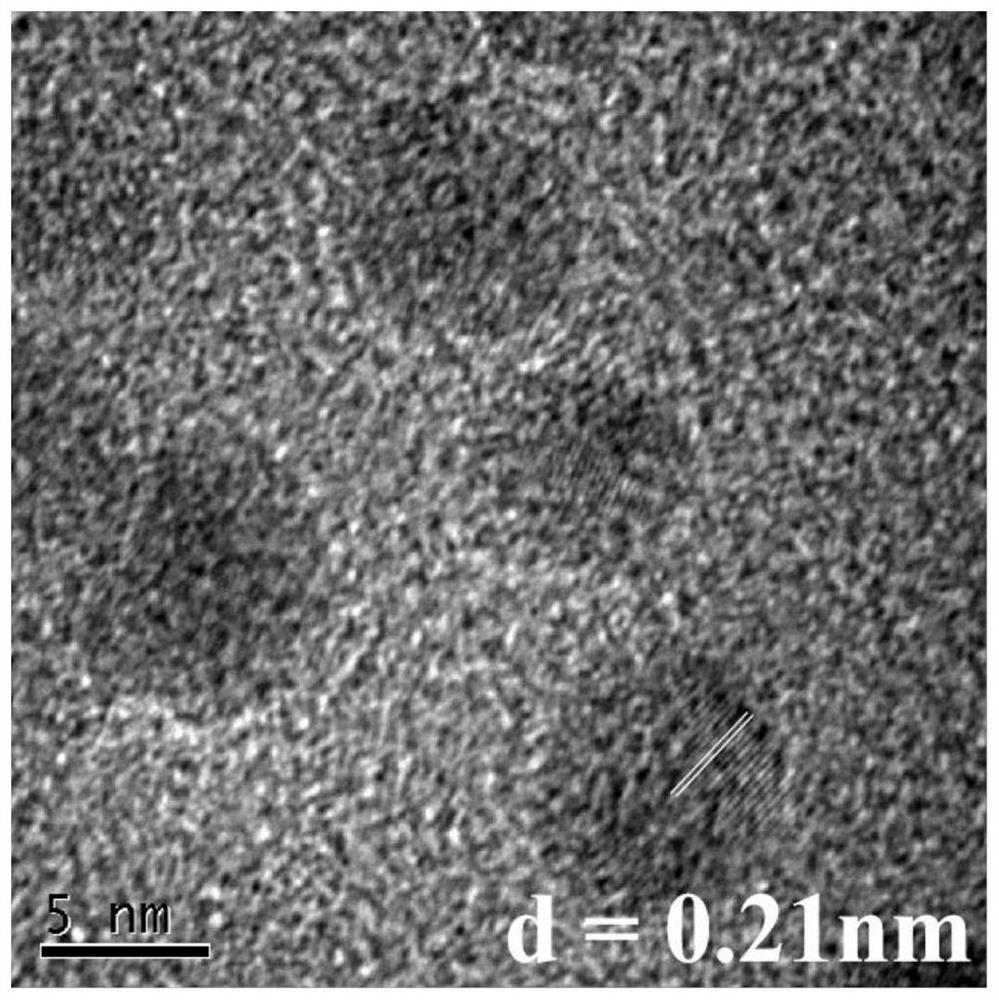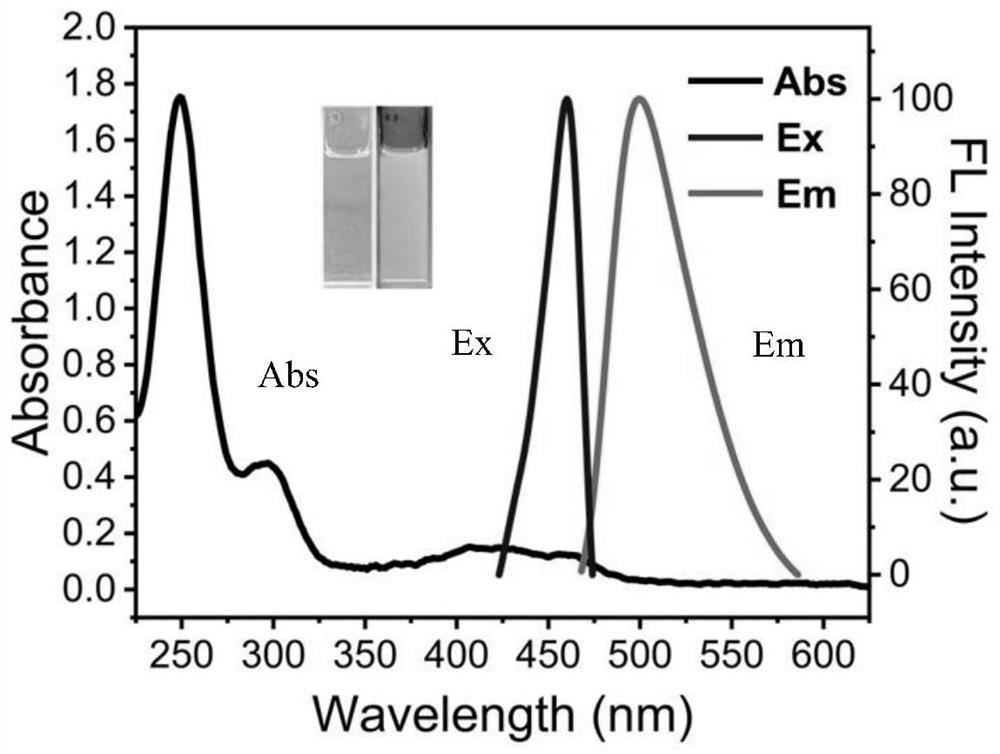Carbon quantum dot two-photon fluorescent dye for ultrafast cell staining
A two-photon fluorescence, carbon quantum dot technology, applied in the field of nanomaterials, can solve the problem of lack of two-photon fluorescent dyes, and achieve the effects of good biocompatibility, excellent imaging performance, and excellent imaging effect.
- Summary
- Abstract
- Description
- Claims
- Application Information
AI Technical Summary
Problems solved by technology
Method used
Image
Examples
Embodiment 1
[0035] A carbon quantum dot two-photon fluorescent dye for ultrafast cell dyeing in this embodiment is prepared by the following method:
[0036] 1) Prepare carbon quantum solution by one-step solvothermal method with m-phenylenediamine as precursor:
[0037] 0.2 g of m-phenylenediamine was added to 20 mL of absolute ethanol, then 672 μL of concentrated hydrochloric acid (mass concentration: 36.5%) was added, and the obtained mixture was subjected to hydrothermal treatment at 180° C. in a polytetrafluoroethylene-lined stainless steel autoclave. After 2 hours, the reaction was cooled to room temperature, and the product was centrifuged at 10,000 rpm for 20 minutes to remove non-fluorescent precipitates to obtain a carbon quantum solution;
[0038] 2) Using silica gel column chromatography to separate the green fluorescent component from the carbon quantum prepared in step 1), which is the carbon quantum dot two-photon fluorescent dye:
[0039] A mixture of dichloromethane and ...
Embodiment 2
[0042] The relevant performance test of the carbon quantum dot two-photon fluorescent dye prepared in Example 1 was carried out, and the following results were obtained.
[0043] 1. Refer to figure 1 , is the transmission electron microscope (TEM) photo of the carbon quantum dot two-photon fluorescent dye, it can be seen that the carbon dot is spherical, the lattice is obvious, and the lattice spacing is 0.21 nm.
[0044] 2. Refer to figure 2 , is the X-ray diffraction pattern of the carbon quantum dot two-photon fluorescent dye. It can be seen that the X-ray diffraction 2θ angle of the carbon dot is 22°, which is consistent with the TEM.
[0045] 3. Refer to image 3 , is the UV absorption spectrum and fluorescence spectrum of the carbon quantum dot two-photon fluorescent dye. It can be seen from the figure that it has the largest absorption band at 248 nm, which represents the π-π* transition of the aromatic C=C bond ; the weak absorption peak at about 300 nm is due to the...
PUM
 Login to View More
Login to View More Abstract
Description
Claims
Application Information
 Login to View More
Login to View More - R&D
- Intellectual Property
- Life Sciences
- Materials
- Tech Scout
- Unparalleled Data Quality
- Higher Quality Content
- 60% Fewer Hallucinations
Browse by: Latest US Patents, China's latest patents, Technical Efficacy Thesaurus, Application Domain, Technology Topic, Popular Technical Reports.
© 2025 PatSnap. All rights reserved.Legal|Privacy policy|Modern Slavery Act Transparency Statement|Sitemap|About US| Contact US: help@patsnap.com



